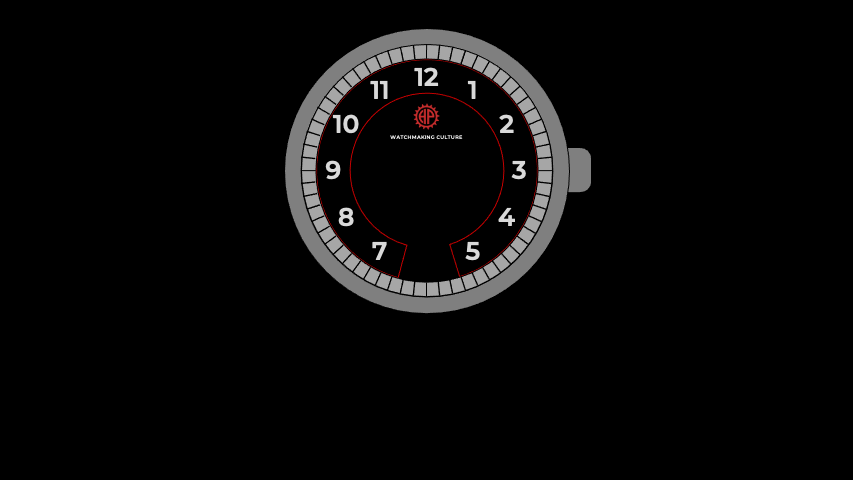SECOND TIME ZONE
Watches displaying two time zones simultaneously emerged with the rise of the railway network and industrialisation, primarily from the early 20th century onward. This complication, often mistakenly referred to as a “GMT,” allows the wearer to display the time of a second time zone of their choice, independently adjustable from local time. There are multiple ways to display and adjust a second time zone, depending on the design and function of the watch.
Central 2nd Time Zone Display
In this configuration, the second time zone is indicated by an additional hour hand mounted at the centre of the dial. Most often, this extra hour hand completes one rotation every 24 hours. To accommodate this, a dedicated 24-hour scale is placed either on the dial or on a rotating bezel.

More rarely, the second time zone hour hand rotates over 12 hours, in which case a day/night indicator linked to the second time zone is added to avoid confusion between morning and afternoon hours.

Off-Centre 2nd Time Zone Display
The second time zone can also be shown on an off-centred sub-dial. In this setup, the second time zone typically displays both hours and minutes. The minute hand is synchronised with the local time minute hand, and both move together — during regular operation and when setting the time. Since these hands usually follow a 12-hour cycle, a day/night indicator is often included to differentiate between AM and PM.

Digital 2nd Time Zone Display
Sometimes, the second time zone is shown digitally via a rotating disc, usually graduated over 24 hours, which appears through an aperture on the dial.

Adjusting the Second Time Zone
Even when the second time zone display includes a minute hand, adjustments affect only the hour hand of the second time zone. If a minute hand is present, it remains indexed to the local time minute hand, moving in sync during time setting and normal operation. The adjustment of the second time zone hour can be operated via correctors, pushers, or the crown. Correctors and pushers may come as a single unit or as a pair. With a single pusher or corrector, each press increments (or decrements) the second time zone hour hand by one hour.

With two pushers or correctors, one can be used for incrementing, and the other for decrementing the second time zone hour hand.

When the second time zone mechanism is integrated into the base movement, adjustment may be done via the crown. In this case, the winding stem generally has an intermediate position, similar to a date corrector, between winding and time-setting positions. As with pushers and correctors, the crown may adjust the second time zone in one direction only (incrementing when turned in a specific direction), or in both directions (incrementing in one direction, decrementing in the other).

It is important to note that when the second time zone display includes a day/night indicator, this indicator adjusts synchronously with the second time zone hour hand.
